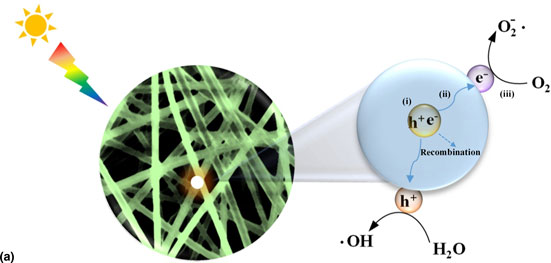Crossref Citations
This article has been cited by the following publications. This list is generated based on data provided by
Crossref.
Zhang, Hongnan
Yu, Ming
and
Qin, Xiaohong
2019.
Photocatalytic Activity of TiO2 Nanofibers: The Surface Crystalline Phase Matters.
Nanomaterials,
Vol. 9,
Issue. 4,
p.
535.
Ge, Jianlong
Zhang, Yifan
Heo, Young-Jung
and
Park, Soo-Jin
2019.
Advanced Design and Synthesis of Composite Photocatalysts for the Remediation of Wastewater: A Review.
Catalysts,
Vol. 9,
Issue. 2,
p.
122.
Shinde, Sachin Girdhar
Patil, Maheshkumar Prakash
Kim, Gun-Do
and
Shrivastava, Vinod Shankar
2020.
Ni, C, N, S multi-doped ZrO2 decorated on multi-walled carbon nanotubes for effective solar induced degradation of anionic dye.
Journal of Environmental Chemical Engineering,
Vol. 8,
Issue. 3,
p.
103769.
Shikuku, Victor Odhiambo
and
Nyairo, Wilfrida N.
2020.
Impact of Textile Dyes on Public Health and the Environment.
p.
205.
Mishra, Debabrata
and
Srivastava, Manish
2020.
Nano-Materials as Photocatalysts for Degradation of Environmental Pollutants.
p.
15.
Wu, Xiaohui
Cao, Leitao
Song, Jun
Si, Yang
Yu, Jianyong
and
Ding, Bin
2020.
Thorn-like flexible Ag2C2O4/TiO2 nanofibers as hierarchical heterojunction photocatalysts for efficient visible-light-driven bacteria-killing.
Journal of Colloid and Interface Science,
Vol. 560,
Issue. ,
p.
681.
Ahmed, Waheed
and
Iqbal, Javed
2021.
Effect of Ni doping on structural, optical and magnetic characteristics of ZrO2 nanoparticles with efficient visible light driven photocatalytic activity.
Ceramics International,
Vol. 47,
Issue. 17,
p.
24895.
Pandya, Alok
Shah, Khush
Prajapati, Harsh
and
Vishwakarma, Gajendra Singh
2021.
GQD embedded bacterial cellulose nanopaper based multi-layered filtration membranes assembly for industrial dye and heavy metal removal in wastewater.
Cellulose,
Vol. 28,
Issue. 16,
p.
10385.
Pascariu, Petronela
Cojocaru, Corneliu
Samoila, Petrisor
Airinei, Anton
Olaru, Niculae
Rotaru, Aurelian
Romanitan, Cosmin
Tudoran, Lucian Barbu
and
Suchea, Mirela
2022.
Cu/TiO2 composite nanofibers with improved photocatalytic performance under UV and UV–visible light irradiation.
Surfaces and Interfaces,
Vol. 28,
Issue. ,
p.
101644.
Xu, Yanping
Lin, Jie
Wu, Xiaoxia
Xu, Xiawei
Zhang, Dinghu
Xie, Yujiao
Pan, Ting
He, Yiwei
Wu, Aiguo
and
Shao, Guoliang
2022.
A TiO2-based bioprobe enabling excellent SERS activity in the detection of diverse circulating tumor cells.
Journal of Materials Chemistry B,
Vol. 10,
Issue. 20,
p.
3808.
Rathnakumar, Sriram
Bhaskar, Seemesh
Badiya, Pradeep Kumar
Sivaramakrishnan, Venketesh
Srinivasan, Venkatesh
and
Ramamurthy, Sai Sathish
2023.
Electrospun PVA nanofibers doped with titania nanoparticles in plasmon-coupled fluorescence studies: An eco-friendly and cost-effective transition from 2D nano thin films to 1D nanofibers.
MRS Communications,
Vol. 13,
Issue. 2,
p.
290.
